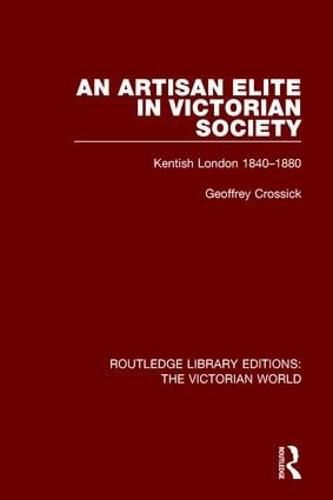Readings Newsletter
Become a Readings Member to make your shopping experience even easier.
Sign in or sign up for free!
You’re not far away from qualifying for FREE standard shipping within Australia
You’ve qualified for FREE standard shipping within Australia
The cart is loading…






First published in 1978. Mid-Victorian Britain was relatively stable in comparison with the turbulent period that preceded it, and that stability is in part explained by the emergence of an artisan elite with a specific relationship to the society around it. This book examines that elite: its clubs and societies, co-operatives and building societies; its values and ideology, challenging the notion that these artisans directly absorbed middle-class values; its politics, tracing the evolution from Chartism through the Reform League and on to a radical liberalism which existed in constant tension with the local liberal middle class.
A careful reconstruction of the social, political and industrial life of these artisans is set within the context of the local communities, and their understanding of the mid-Victorian society in which they lived is seen as the explanation for their values and activities. This title makes a major contribution towards our understanding of the nineteenth-century working class.
$9.00 standard shipping within Australia
FREE standard shipping within Australia for orders over $100.00
Express & International shipping calculated at checkout
First published in 1978. Mid-Victorian Britain was relatively stable in comparison with the turbulent period that preceded it, and that stability is in part explained by the emergence of an artisan elite with a specific relationship to the society around it. This book examines that elite: its clubs and societies, co-operatives and building societies; its values and ideology, challenging the notion that these artisans directly absorbed middle-class values; its politics, tracing the evolution from Chartism through the Reform League and on to a radical liberalism which existed in constant tension with the local liberal middle class.
A careful reconstruction of the social, political and industrial life of these artisans is set within the context of the local communities, and their understanding of the mid-Victorian society in which they lived is seen as the explanation for their values and activities. This title makes a major contribution towards our understanding of the nineteenth-century working class.